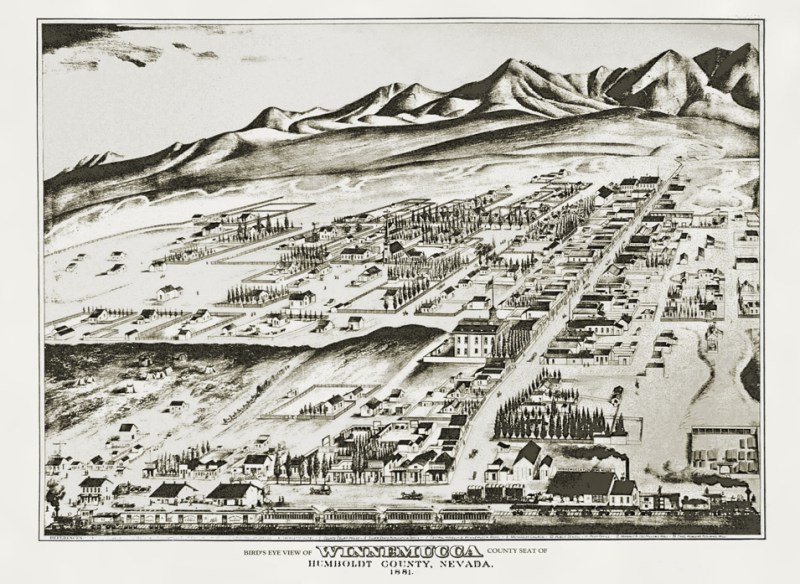Jebediah Strong Smith was an early frontiersman, hunter, trapper, author, cartographer, mountain man and explorer of the western United States and the subject of Nevada State Historic Marker number 84.

Born in 1799 in Jericho, New York, Jedediah Strong Smith would grow up to become one of the most significant figures in the exploration of the American West during the early 19th century. His life was a testament to the indomitable spirit of discovery that characterized the era of westward expansion.
From a young age, Jebediah Smith exhibited an insatiable curiosity and an adventurous spirit that set him apart from his peers. Raised in a family of modest means, he received only limited formal education. However, his voracious appetite for learning and his natural inclination for exploration propelled him beyond the confines of the classroom.
Fur Trapping and the Path to the West
At the age of 21, Smith embarked on his first western expedition as a fur trapper, a career choice that would shape the course of his life. He joined the Rocky Mountain Fur Company and ventured into the untamed wilderness of the Rocky Mountains, determined to carve his own path in uncharted territories. His experiences during this period honed his survival skills and deepened his connection to the natural world.
The First Overland Expedition to California:
In 1826, Smith led a pioneering expedition that would take him and his small band of explorers on an arduous journey from the Great Salt Lake to California. This remarkable feat marked the first documented overland journey from the United States into California. Smith’s exploration helped to map previously unknown regions and establish crucial trade routes.
Mapping the West and Bridging Cultures
Jebediah Smith’s exploration efforts were not limited to geography alone. His interactions with various Native American tribes and his ability to communicate across cultural divides showcased his adaptability and diplomacy. He valued the knowledge and insights of the indigenous peoples he encountered, contributing to a more nuanced understanding of the American West.
Jebediah Strong Smith’s legacy is imprinted on the landscapes he traversed and the narratives he helped to shape. His meticulous journaling and mapping laid the groundwork for further expeditions, encouraging subsequent generations of explorers to continue pushing the boundaries of the known world. Smith’s untimely death at the hands of Comanche warriors in 1831, at the age of 32, underscored the risks and sacrifices inherent in his chosen path.
Jebediah Strong Smith’s life epitomized the restless spirit of exploration that defined the era of westward expansion in the United States. His contributions to mapping the American West, fostering cross-cultural connections, and inspiring future adventurers are enduring testaments to his remarkable journey. As a trailblazer who ventured into the unknown with courage and determination, Smith’s legacy continues to inspire individuals to seek new horizons and embrace the thrill of discovery.
Jedediah Strong Smith Nevada State Historic Marker 84 Text
Nevada State Historical Markers identify significant places of interest in Nevada’s history. The Nevada State Legislature started the program in 1967 to bring the state’s heritage to the public’s attention with on-site markers. These roadside markers bring attention to the places, people, and events that make up Nevada’s heritage. They are as diverse as the counties they are located within and range from the typical mining boom and bust town to the largest and most accessible petroglyph sites in Northern Nevada Budget cuts to the program caused the program to become dormant in 2009. Many of the markers are lost or damaged.
From May to June 1827, explorer and trapper Jedediah Smith found a route from California’s central valley to the Great Salt Lake Valley in Utah. He became the first European American to completely cross what is now Nevada.
Because Smith’s journal and map have never been found, his exact route is unknown. Based on Smith’s own statements about his difficult trip, modern historians and geographers have pieced together the most plausible route. Smith crossed the Sierra Nevada at Ebbetts Pass, swung southeast along or across the headwaters and middle reaches of the Walker River, and passed into central Nevada’s open spaces south of Walker Lake.
Smith entered Smoky Valley on its southwest side in June 1827 and crossed the valley in a northeasterly direction. He then paralleled the future Simpson survey, route of the Pony Express and Overland Stage, along modern U.S. Highway 50.
He entered Utah at Ibapah.
STATE HISTORICAL MARKER NO. 84
STATE HISTORIC PRESERVATION OFFICE
WHITE PINE PUBLIC MUSEUM, INC.
Nevada State Historic Marker 84 Map
Nevada State Historic Marker number 84 is located near Ely, Nevada, in White Pine County. The marker is on U.S. Highway 93, on the east side of the highway. It is found in rest area, four miles north of Ely.
Nevada State Historic Marker 84 Summary
| Named | Jedediah Strong Smith |
| Location | White Pine County, Nevada |
| Latitude, Longitude | 39.2771, -114.8463 |
| Nevada State Historic Marker | 84 |



